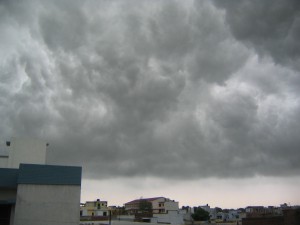What is a Retreating Monsoon?
During the months of October-November, the south-west monsoon winds become weaker and start to retreat from the skies of North India. This phase of the monsoon is known as the retreating monsoon.
The major sections in this article about the retreating monsoons are mentioned below:
- Season
- Climate
- Temperature & pressure
- Impact
This topic is important for IAS Exam, from the perspective of the Geography syllabus (GS-I).
Season of Retreating Monsoon
Retreating monsoon season commences with the beginning of the withdrawal of the south-west monsoon [mid-September – November] and lasts till early January. It is a 3-month long process where it starts from the peninsula in October and from the extreme south-eastern tip by December. The south-west monsoons withdraw from the Coromandel coast in mid-December. In Punjab, the south-west monsoons withdraw from there in the second week of September.
The withdrawal of the retreating monsoon is gradual and takes a longer duration compared to the advancing one.
Climate during Retreating Monsoon
With the onset of retreating monsoon, skies become clearer and clouds disappear. The disappearance of clouds makes the climate of various places hotter gradually. Severe tropical cyclones emerge from the Bay of Bengal. The month of October-November is prone to severe cyclones.
Temperature & Pressure – Retreating monsoon
During this period, the temperature comes down sharply. The sky also becomes clear.
As the monsoon starts retreating towards the south, the pressure gradient becomes low. Local pressure conditions usually affect the wind flow during that time.
It is during the retreating monsoon season in India that the southeastern coast receives a lot of rainfall; tropical cyclones also occur during this time. The state of Tamil Nadu receives almost half of its annual rainfall during this time. This is called the winter monsoon or the northeast monsoons.
Impact of Retreating Monsoon
The retreating monsoon brings rainfall in an uneven amount to different places across India. Some places receive heavy rainfall and places that witness scanty rainfall.
Areas of Heavy rainfall
- The western part of Western Ghats (200-400cm)
- North-eastern India (Assam, Arunachal Pradesh, Sikkim, etc)
Areas of low rainfall
- Karnataka
- Gujarat
- Maharashtra

Given below is a sample UPSC prelims question:
Consider the following statements:
- Retreating monsoon season is 3 months long.
- The temperature falls during the retreating monsoon season.
Which of the following statements are correct:
- 1 only
- 2 only
- Both 1 and 2
- None of the above
Answer: c
Related Links:

Comments